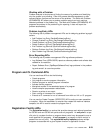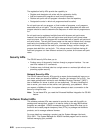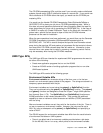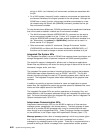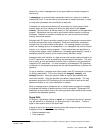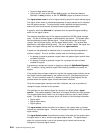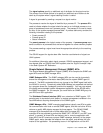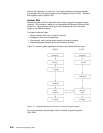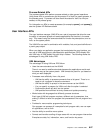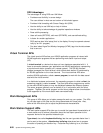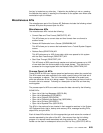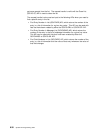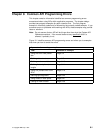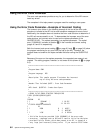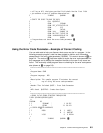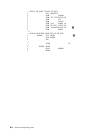Process-Related APIs
The process-related APIs perform process-related or other general operations.
Using these APIs, a process can get the process ID of itself, its parent process, or
the process group. A process can also check the status for itself, its child pro-
cesses, or the process group.
For information on APIs to create processes (for example, spawn() and spawnp()),
see the
System API Reference
book.
User Interface APIs
The user interface manager (UIM) APIs are a set of programs that allow the user
the ability to use panel groups and create applications that function in the same
way. This means using the same standards for function key descriptions, and so
forth, as the system panels.
The UIM APIs are used in combination with variables, lists, and panel definitions in
a panel group object.
When you design an application program that manipulates the user interface, you
can use all UIM panel groups, data description specifications (DDS) display files
with UIM help, or DDS display files with help in folders. The following shows the
advantages of using UIM versus DDS.
UIM Advantages
The advantages of using UIM over DDS follow:
Uses the same standards as the AS/400
There is no need to redefine standards because the applications would work
the same way as the system panels. UIM formats the panel for you based on
what you want displayed.
Processes more efficiently from a list panel
– UIM has the ability to process commands from a list panel. There is no
need to call a program to issue the command.
– UIM has the ability to prompt in the same manner as the AS/400.
– You can specify a program for UIM to call after the option is selected.
– Confirmation panels are built into the system.
– UIM provides more efficient list entry access and update processing.
Works better with languages that efficiently process structures
Each type of UIM exit program requires a different set of parameters, thus
making it difficult to have one program that processes all the exit program func-
tions.
Provides for more modular programming techniques
One program can process all incomplete list exit program calls, one can open
all applications, and so forth.
Has the ability to condition menu options
Formats and handles scrolling of large areas with no user program intervention
Examples are data, list, information, menu, and function key areas.
Chapter 8. Use of OS/400 APIs 8-27



